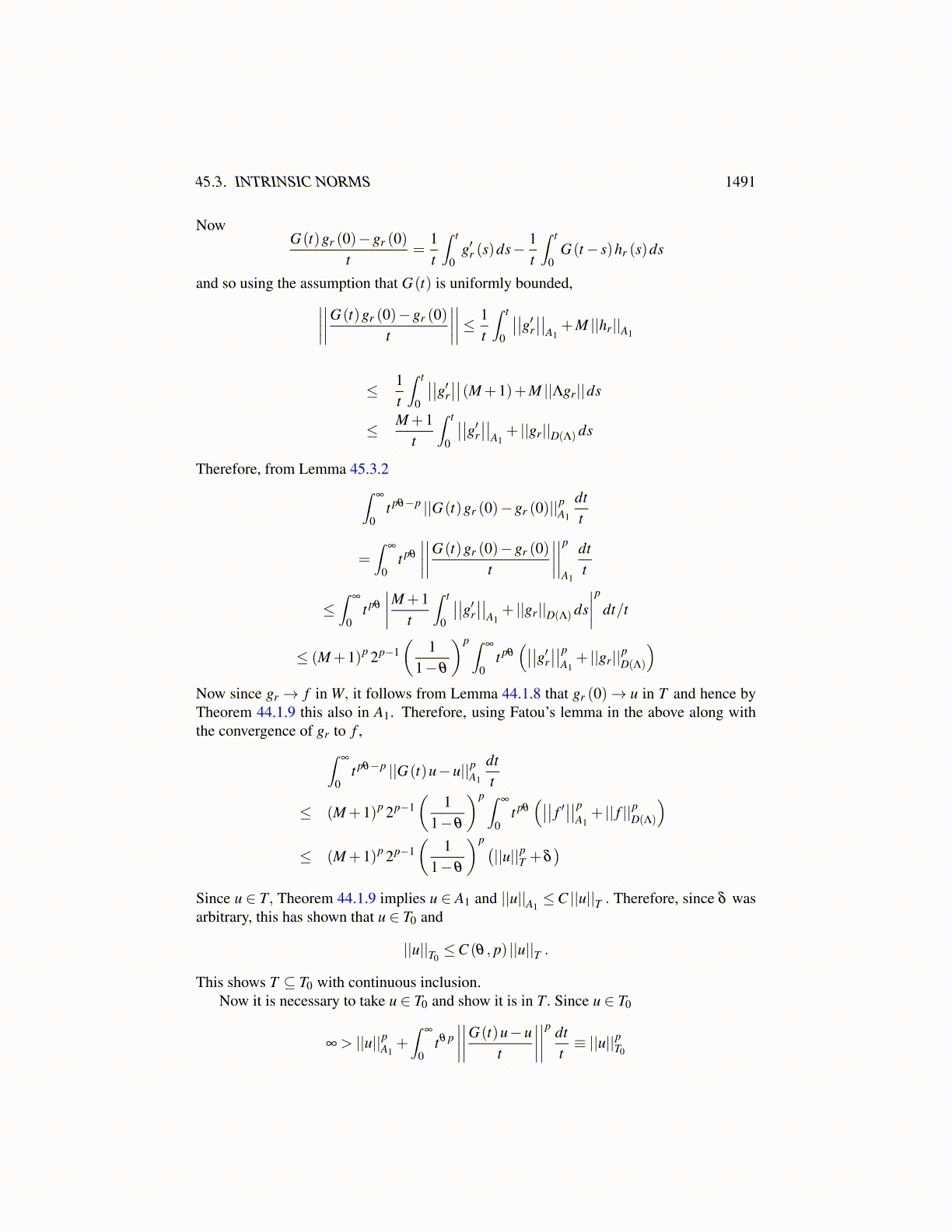
45.3. INTRINSIC NORMS 1491
Since this limit exists, the last limit in the above exists and equals
ΛG(t)y0 (45.3.10)
and G(t)y0 ∈ D(Λ). Now consider 45.3.8.
y(t +h)− y(t)h
=G(t +h)−G(t)
hy0+
1h
(∫ t+h
0G(t− s+h)g(s)ds−
∫ t
0G(t− s)g(s)ds
)
=G(t +h)−G(t)
hy0 +
1h
∫ t+h
tG(t− s+h)g(s)ds
+1h
(G(h)
∫ t
0G(t− s)g(s)ds−
∫ t
0G(t− s)g(s)ds
)From the claim and 45.3.9, 45.3.10 the limit of the right side is
ΛG(t)y0 +g(t)+Λ
(∫ t
0G(t− s)g(s)ds
)= Λ
(G(t)y0 +
∫ t
0G(t− s)g(s)ds
)+g(t)
Hencey′ (t) = Λy(t)+g(t)
and from the formula, y′ is continuous since by the claim and 45.3.10 it also equals
G(t)Λy0 +g(t)+G(t)g(0)−g(t)+∫ t
0G(t− s)g′ (s)ds
which is continuous. The claim and 45.3.10 also shows y(t) ∈ D(Λ). This proves theexistence part of the lemma.
It remains to prove the uniqueness part. It suffices to show that if
y′−Λy = 0, y(0) = 0
and y is C1 having values in D(Λ) , then y = 0. Suppose then that y is this way. Letting0 < s < t,
dds
(G(t− s)y(s))
≡ limh→0
G(t− s−h)y(s+h)− y(s)
h
−G(t− s)y(s)−G(t− s−h)y(s)h